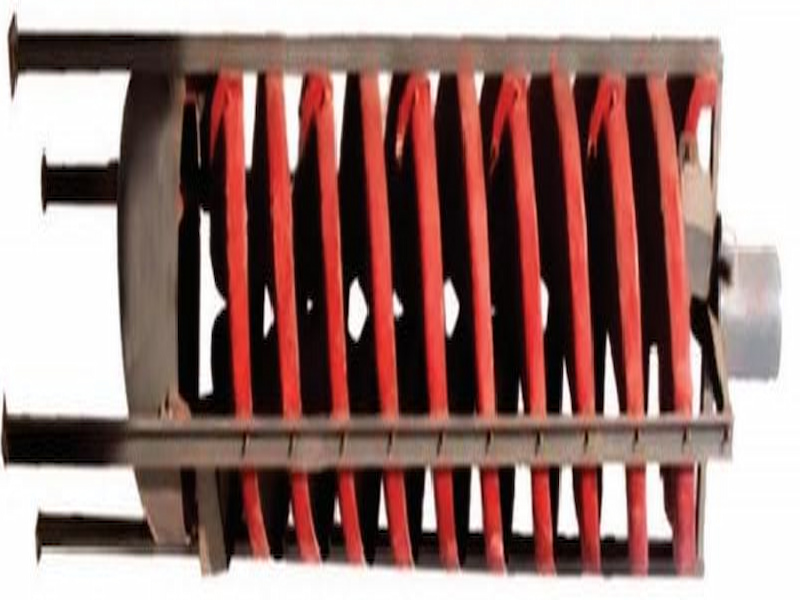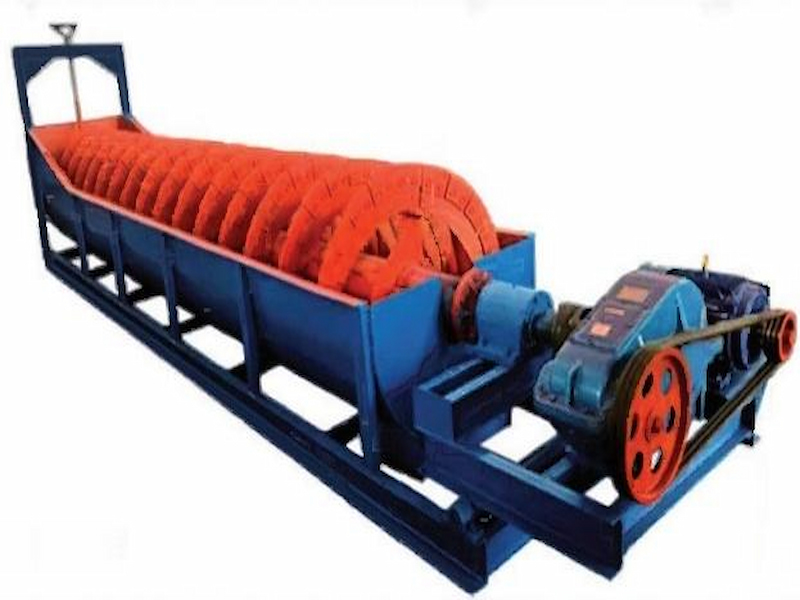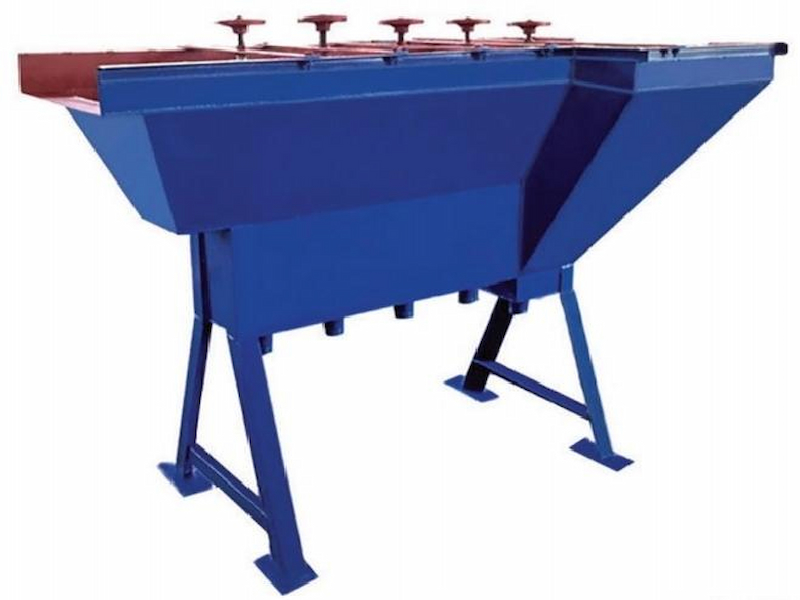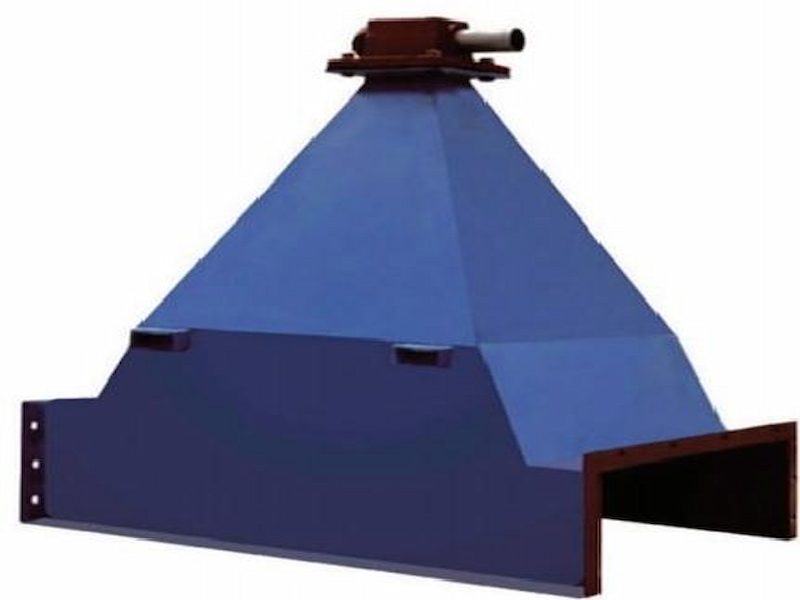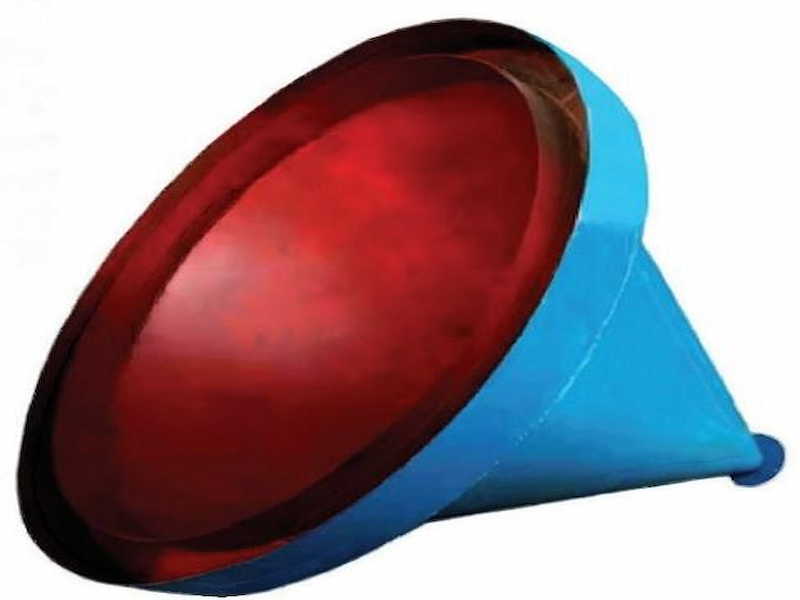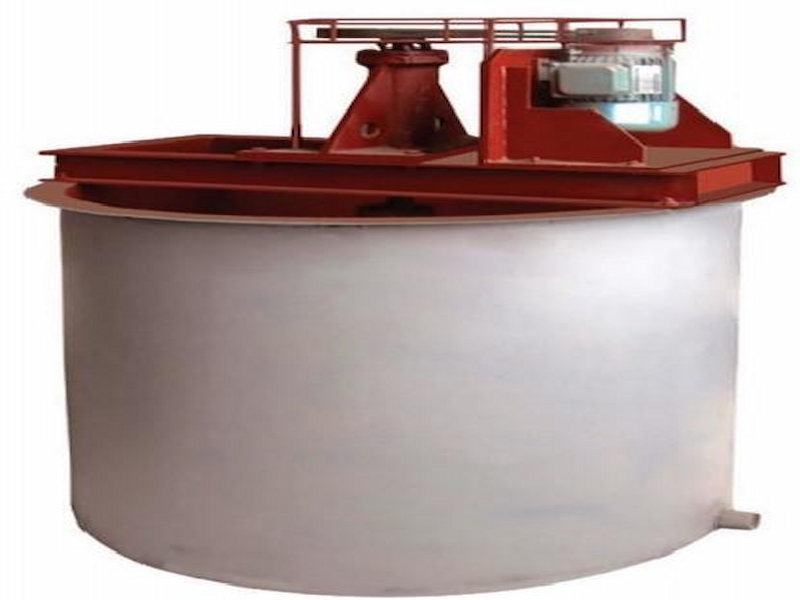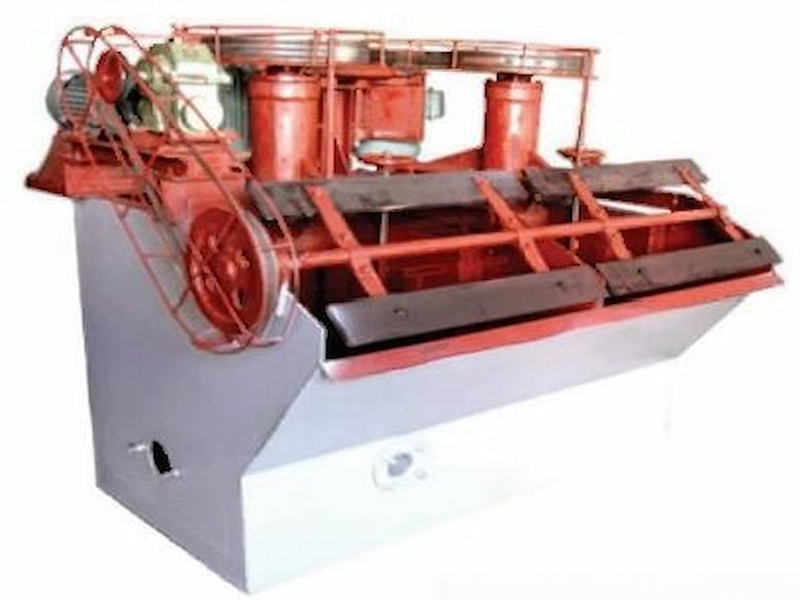CATHAY experimental spiral chute: gravity-centrifugal synergy, an efficient tool for laboratory mineral sorting
1. Compound sorting principle to achieve precise mineral classification
CATHAY experimental spiral chute uses the combined effect of gravity and centrifugal force to achieve mineral sorting. Its core is the inclined spiral chute (3-5 spiral turns). The slurry (concentration 10%-30%) flows in from the central feed port at the top of the chute and rotates along the spiral trough surface. Under the combined action of gravity (causing the ore particles to slide down the trough surface) and centrifugal force (causing the ore particles to move to the outside of the trough), ore particles of different densities are stratified: high-density ore particles (heavy minerals) gather to the inside of the trough (near the axis side) because the centrifugal force they receive is greater than the gravity component, and slowly slide down along the bottom of the trough; low-density ore particles (light minerals) are dominated by the gravity component, diffuse to the outside of the trough, and flow rapidly with the slurry. At the bottom of the chute, the heavy minerals on the inside and the light minerals on the outside are collected separately by the interceptor to complete the sorting process. The trough slope (adjustable from 8° to 15°), pitch (200-500mm) and feed rate (0.5-5L/min) can be precisely controlled, which can effectively separate minerals with a density difference of ≥0.2g/cm³, with a sorting efficiency of more than 80%, providing reliable data for mineral selectivity research.
2. Multi-ore adaptation, covering the entire mining experiment scene
Sand ore sorting experiment: It performs well in the sorting research of sand ore such as gold, tin, and platinum. Taking gold sorting as an example, after the slurry is sorted by the spiral chute, the gold particles (density 19.3g/cm³) gather on the inside to become concentrate, and the enrichment ratio can reach 50-100 times. The tailings gold loss rate is controlled below 3%, which clearly reflects the re-selection recovery effect of gold, and provides parameter basis for the process design of sand mining.
Seashore mineral enrichment: It is suitable for sorting experiments of seashore heavy minerals such as zircon sand, ilmenite, and monazite. In the separation of zircon sand and quartz, by utilizing the density difference between the two (zircon sand 4.6-4.7g/cm³, quartz 2.65g/cm³), by adjusting the trough slope (10°-12°) and feed concentration (20%), the grade of zircon sand concentrate can be increased to more than 90%, meeting the raw material requirements of the subsequent purification process.
Metal ore pre-selection: used for pre-selection and waste disposal experiments of low-grade metal ores. For low-grade iron ore (grade 15%-20%), more than 60% of waste rock can be discarded after spiral chute sorting, so that the grade of the selected ore is increased to 25%-30%, significantly reducing the subsequent ore dressing cost. Experimental data show that the recovery rate of iron ore after pre-selection can be increased by 5-8 percentage points, providing support for the economic benefit evaluation of the mine.
Non-metallic ore purification: For non-metallic ores such as barite, fluorite, and diamond, separation from gangue can be achieved. In the barite and calcite sorting experiment, by optimizing the screw pitch (300-400mm) and the feed rate (1-2L/min), barite (density 4.5g/cm³) as a heavy mineral is enriched on the inside, and the concentrate grade is more than 95%, meeting the requirements of chemical, building materials and other industries for barite purity.
Comparison of ore dressing processes: The effects of different spiral parameters (such as groove surface roughness and spiral diameter) on the sorting effect can be compared. For example, the sorting difference between smooth groove surface and grooved groove surface can be tested, and the optimal chute parameters for specific minerals can be determined through indicators such as concentrate grade and recovery rate, providing experimental basis for the selection of industrial spiral chutes.
3. Performance advantages to ensure reliable experimental data
High sorting accuracy: The trough body is formed by precision molds, and the error of spiral parameters (slope, pitch) is ≤1%, ensuring the stability of the slurry flow trajectory; the interceptor sorting area can be finely adjusted (each gear width is 5mm), which can accurately capture minerals in different density ranges, and the repeatability error of the sorting results is ≤4%, meeting the requirements of scientific research experiments for data consistency.
Convenient and flexible operation: The feed volume is accurately controlled by the rotor flowmeter (accuracy ±5%), and the slope of the trough surface can be quickly adjusted by the bottom adjustment screw without disassembling parts; the slurry concentration can be adjusted in real time through the water adding device to adapt to the characteristics of different ore samples. Experimental personnel can get started after simple training, and the single batch experiment time (including sample loading, sorting, and sampling) can be controlled within 30 minutes.
Unpowered energy-saving design: Sorting is completed only by relying on the gravity flow of the slurry itself, without the need for additional power drive (except for the feed pump), and the energy consumption is only 1/10 of that of traditional centrifugal sorting equipment, which is suitable for long-term continuous experiments in the laboratory and reduces operating costs.
Visual sorting process: The tank body is made of transparent plexiglass or high-strength acrylic material, which can visually observe the flow state of the slurry and the stratification process of the mineral particles, and is convenient for recording the sorting phenomena at different stages (such as the aggregation speed of heavy minerals and the diffusion range of light minerals), providing an intuitive basis for analyzing the sorting mechanism.
4. Structural design, taking into account both experimental adaptability and durability
Miniature design: The overall size is compact (height 800-1200mm, maximum diameter 500mm), and the floor space is only 0.2-0.5㎡. It can be placed directly on the laboratory table, which is suitable for multi-equipment collaborative experiments; the spiral diameter is 150-300mm optional to meet different processing requirements (single processing of 0.1-2kg of ore samples).
Wear-resistant and corrosion-resistant: The surface of the tank in contact with the slurry adopts a special coating (such as polyurethane and ceramic), with a hardness of more than Shore A90, excellent wear resistance, and can withstand long-term erosion of mineral particles. The service life is more than 1,000 experiments; for acidic or alkaline slurries, 316 stainless steel tanks can be selected to resist chemical corrosion.
Easy to clean and maintain: The tank adopts a split design, which can be quickly disassembled and cleaned after the experiment to avoid cross-contamination of different ore samples; the feed port and interceptor are equipped with filters to prevent blockage by large impurities; the equipment has no complex moving parts, low failure rate, and almost zero maintenance cost.
Safe and environmentally friendly: The stable base design ensures that there is no shaking during the operation of the equipment; the slurry collection tank is equipped with an anti-overflow edge to prevent the slurry from leaking out and contaminating the experimental table; wastewater can be collected and treated centrally through the bottom drain, which meets the environmental protection requirements of the laboratory.
5. CATHAY brand guarantee, assisting mining research
Each experimental spiral chute is tested for standard ore samples (such as ilmenite-quartz mixed samples) before leaving the factory to ensure that the spiral parameter accuracy and sorting effect meet the standards. The professional technical team can provide customized services according to experimental needs - such as installing an online camera system to record the movement trajectory of mineral particles, or configuring a multi-trough combination (conducting comparative experiments simultaneously); providing detailed operation manuals and experimental guidance videos to assist researchers in designing experimental plans. The equipment has perfect after-sales support, 7×24-hour hotline response, 1-year warranty for core components (trough, interceptor), and sufficient inventory of wearing parts (seals, filters) to ensure the smooth progress of experiments.
Whether it is mineral selectivity research, mineral processing process optimization or teaching demonstration, CATHAY experimental spiral chute can provide reliable support for laboratory mineral sorting with its precise sorting effect, convenient operation experience, and energy-saving design concept, helping to explore the laws of gravity sorting in depth and promote the efficient development of mining research and teaching.
 Table parameters
Table parameters
|
型号 Model
|
螺距
Spiral size
|
螺旋头数 Number
|
每头圈数 Number
|
给料粒度(mm) Feed size
|
给矿浓度(%) Feed density
|
处理量(t/h) Capacity
|
外形尺寸(mm)
Size
|
重量(kg) Weighe
|
|
BLL-600
|
360
|
2
|
5
|
0.3
|
20-40
|
0.8-1.2
|
700×700×2730
|
90
|
|
BLL-400
|
240
|
2
|
5
|
0.3
|
20-40
|
0.1-0.2
|
460×460×1500
|
50
|





